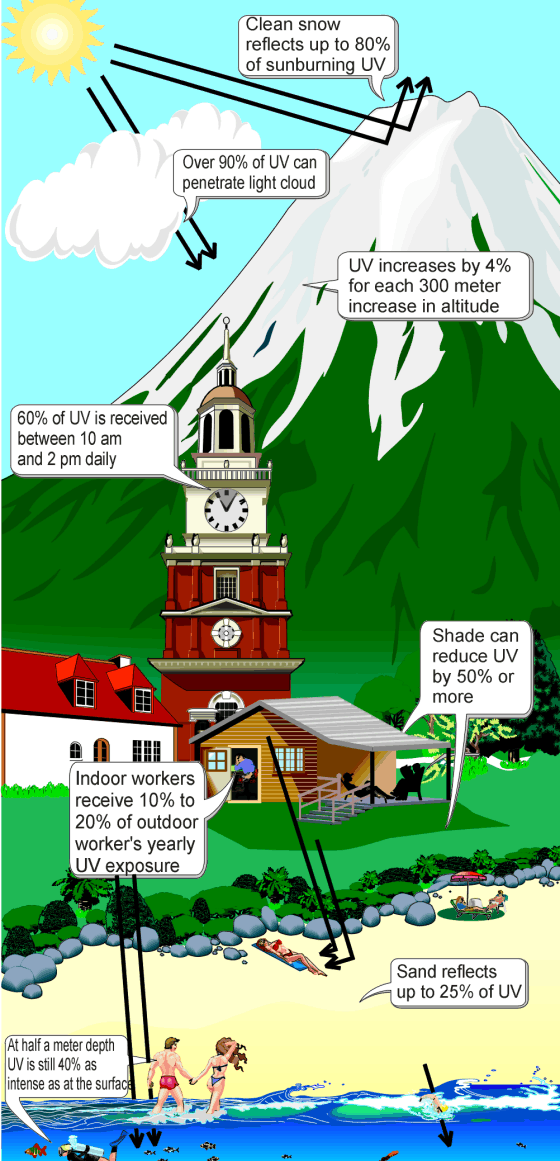DNA, or deoxyribonucleic acid, is the hereditary material in humans and almost all other organisms. Nearly every cell in a person’s body has the same DNA. Most DNA is located in the cell nucleus (where it is called nuclear DNA), but a small amount of DNA can also be found in the mitochondria (where it is called mitochondrial DNA or mtDNA).
 Human DNA consists of about 3 billion bases, and more than 99 percent of those bases are the same in all people. The order, or sequence, of these bases determines the information available for building and maintaining an organism, similar to the way in which letters of the alphabet appear in a certain order to form words and sentences. One of the most important scientific achievements of the twentieth century was to map the 25,000 genes of in human DNA called the Human Genome Project.
Human DNA consists of about 3 billion bases, and more than 99 percent of those bases are the same in all people. The order, or sequence, of these bases determines the information available for building and maintaining an organism, similar to the way in which letters of the alphabet appear in a certain order to form words and sentences. One of the most important scientific achievements of the twentieth century was to map the 25,000 genes of in human DNA called the Human Genome Project.The project began in October 1990 and was initially headed by Aristides Patrinos, head of the Office of Biological and Environmental Research in the U.S. Department of Energy's Office of Science. Francis Collins directed the US National Institutes of Health (NIH) National Human Genome Research Institute efforts.
 A working draft of the genome was announced in 2000 and a complete one in 2003, with further, more detailed analysis still being published. A parallel project was conducted outside of government by the Celera Corporation, or Celera Genomics, which was formally launched in 1998. Most of the government-sponsored sequencing was performed in universities and research centres from the United States, the United Kingdom, Japan, France, Germany and Spain. Researchers continue to identify protein-coding genes and their functions; the objective is to find disease-causing genes and possibly use the information to develop more specific treatments. It also may be possible to locate patterns in gene expression, which could help physicians glean insight into the body's emergent properties.
A working draft of the genome was announced in 2000 and a complete one in 2003, with further, more detailed analysis still being published. A parallel project was conducted outside of government by the Celera Corporation, or Celera Genomics, which was formally launched in 1998. Most of the government-sponsored sequencing was performed in universities and research centres from the United States, the United Kingdom, Japan, France, Germany and Spain. Researchers continue to identify protein-coding genes and their functions; the objective is to find disease-causing genes and possibly use the information to develop more specific treatments. It also may be possible to locate patterns in gene expression, which could help physicians glean insight into the body's emergent properties.While the objective of the Human Genome Project is to understand the genetic makeup of the human species, the project has also focused on several other nonhuman organisms such as E. coli, the fruit fly, and the laboratory mouse. It remains one of the largest single investigative projects in modern science.
The Human Genome Project originally aimed to map the nucleotides contained in a human haploid reference genome (more than three billion).
The "genome" of any given individual (except for identical twins and cloned organisms) is unique; mapping "the human genome" involves sequencing multiple variations of each gene. The project did not study the entire DNA found in human cells; some heterochromatic areas (about 8% of the total genome) remain un-sequenced.
Thanks to the technology underlying genomics research, which has been improving exponentially every couple of years, similar to the way computer tech improves under Moore’s Law.
 "Up to 2006, the various cycles of new technology and introduction were cutting costs in half for a similar product every 22 months," said
Adam Felsenfeld, a program director at the National Human Genome Research Institute, which invests about as much money in DNA sequencing as the Sanger Institute.
"Up to 2006, the various cycles of new technology and introduction were cutting costs in half for a similar product every 22 months," said
Adam Felsenfeld, a program director at the National Human Genome Research Institute, which invests about as much money in DNA sequencing as the Sanger Institute.Progress in DNA sequencing has been as breathtaking as computer possessors improved speeds. The Human Genome Project was estimated to cost $3 billion to sequence a single genome when it began in 1990, but cost reductions during the decade-long effort drove its actual cost closer to $300 million. By the end of the project, researchers estimated that if they were starting again, they could have sequenced the genome for less than $50 million.
By 2006, Harvard’s George Church estimated that his lab could sequence a genome for $2.2 million. In 2007, the sequencing of James Watson’s genome was said to cost less than $1 million. Looking into the future, the NIH wants genomes to cost a mere $100,000 by 2009, and $1,000 five years later.
With dropping costs and increasing speed, a flood of genetic data is flowing out of international institutes across the world. Previous progress was measured in gigabases (billions of DNA base pairs), but now major research centers are stepping up to the terabase level (trillions of bp, as they are abbreviated). (Human genomes contain about 3 gigabases.)
The next generation of technologies could come from a new set of companies like Pacific Biosciences and Helicos. The latter company’s technology, promises to deliver very long sequences of base pairs, perhaps up to 100,000 bp. That would allow scientists to spot new types of patterns as well as make assembling genomes much easier. expect technology to become viable within five years.
The quest to harness the power of DNA to develop personalized medicine is on the threshold of a major milestone: the $1,000 genome sequencing.
Scientists say that breaking the $1,000 barrier roughly the price of an MRI test will accelerate an already fast-moving transformation in genetic discovery and drug development. Some experts believe a person's genetic code eventually will be used routinely to guide prevention and treatment of illnesses throughout life. Drug companies increasingly are identifying gene variants that they can target with drugs. And geneticists are identifying more and more diseases that result from a mutation in just one gene.
 Whole-genome sequencing as opposed to identifying just a subset of genes suspected of being linked to an illness allows scientists to look broadly across all genes for mutations that are associated with diseases.
Whole-genome sequencing as opposed to identifying just a subset of genes suspected of being linked to an illness allows scientists to look broadly across all genes for mutations that are associated with diseases.
But in the past year or two, drugs based on genomic information have begun to reach the market. Still, the wider availability and lower price of sequencing raises the question of how to convert the flood of genetic data into useful information for drug development and treating patients. The future looks bright for genetics as the cost of sequencing will come down in price, the possibilities of a Taylor made cure is around the corner. With the hope of a preventative cure by way of Genomic diagnostics and replacing the mutated gene, the old ways of surgery maybe a thing of the past. Expect preventative cures by popping a pills and quite possible a reduction on hospital bills, after you mapped out your own DNA...























.png)





















